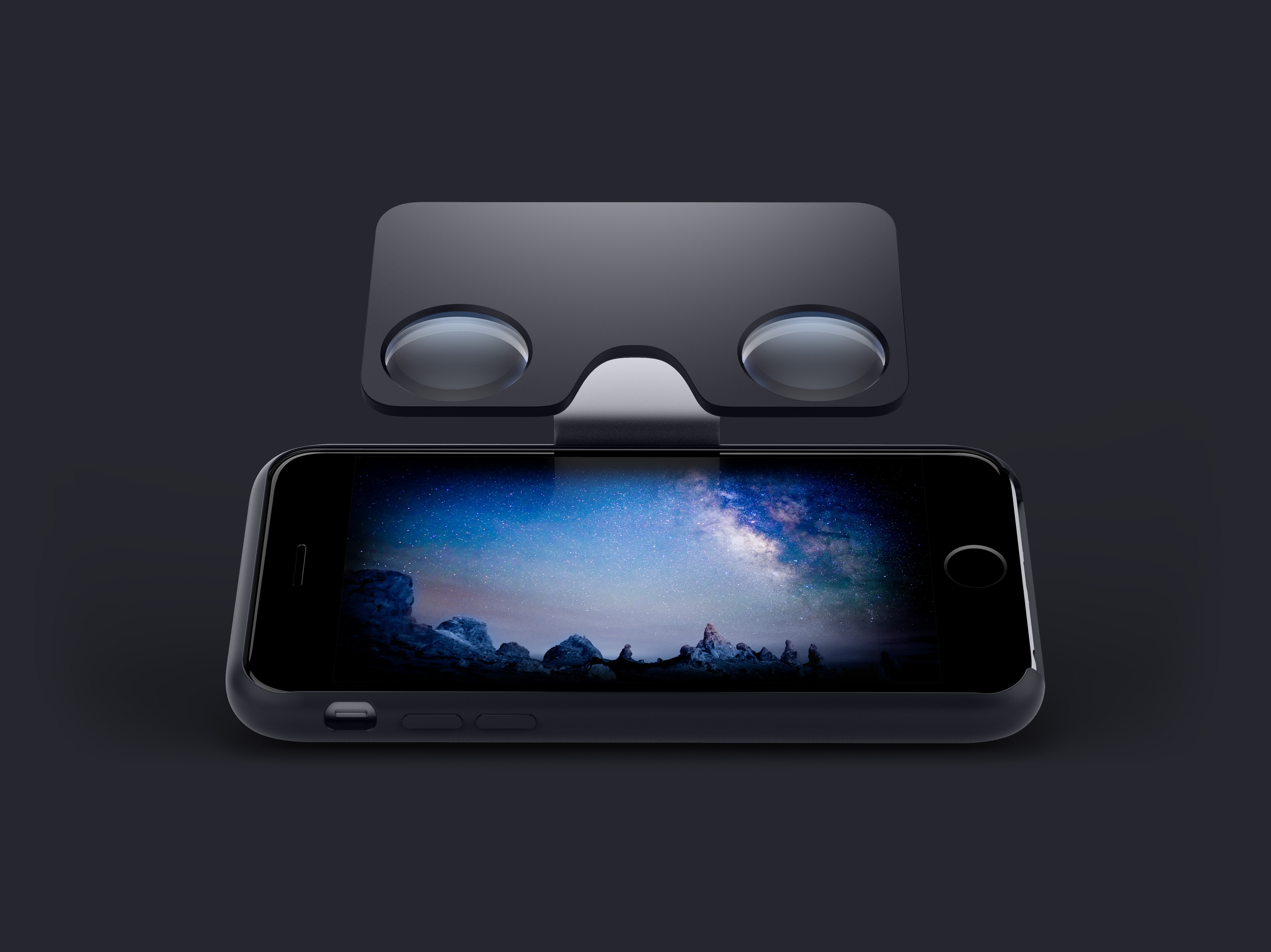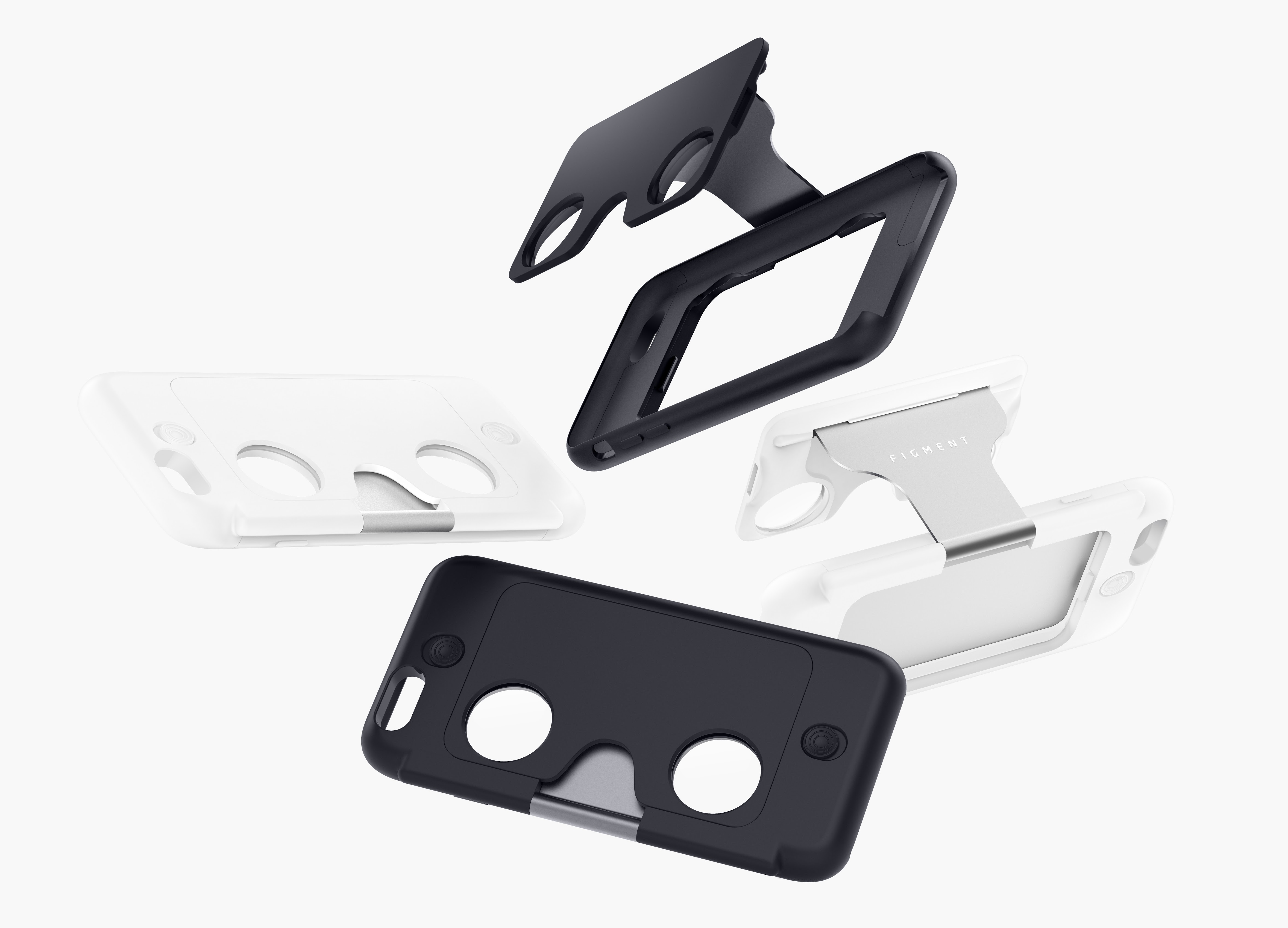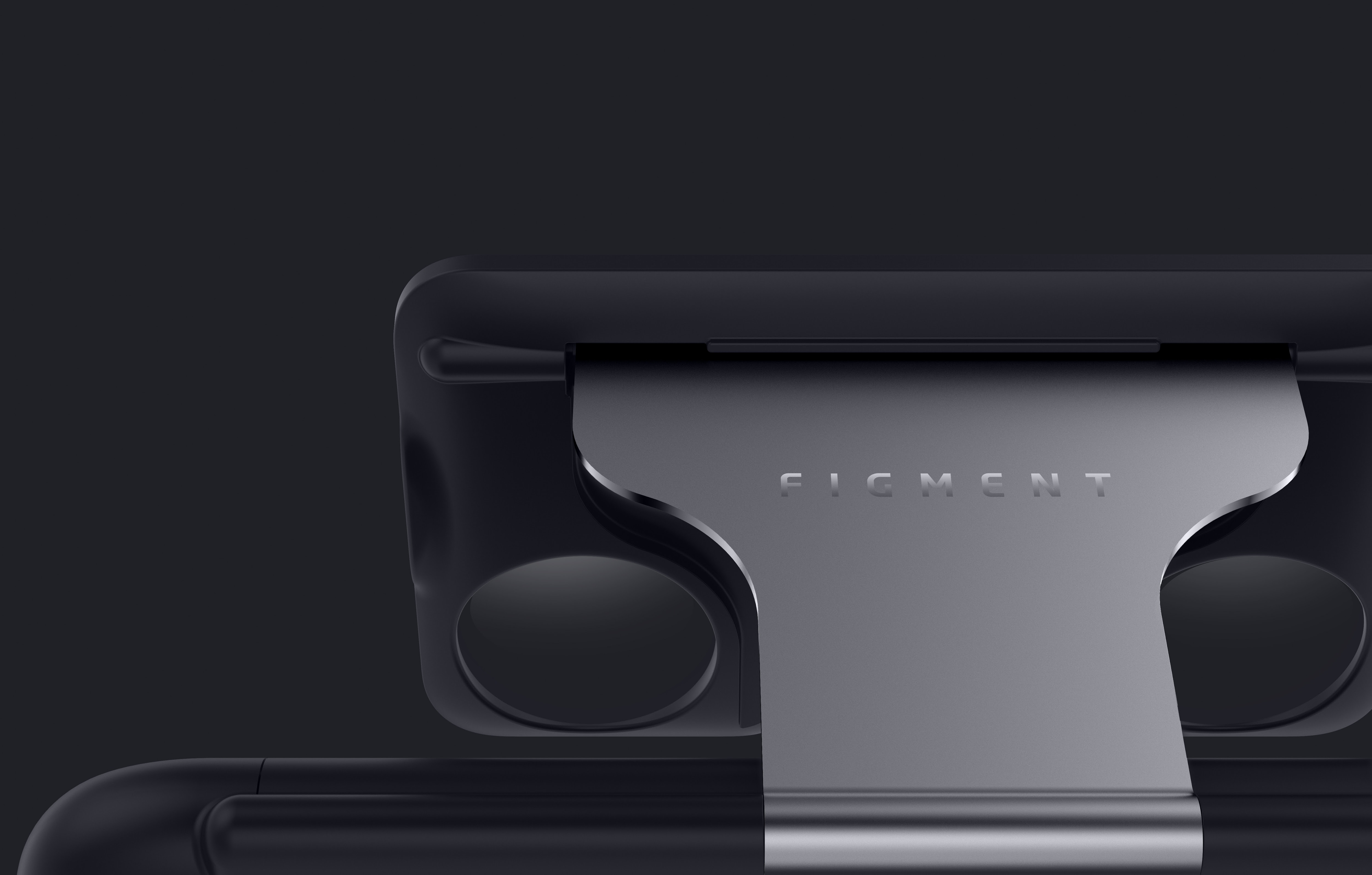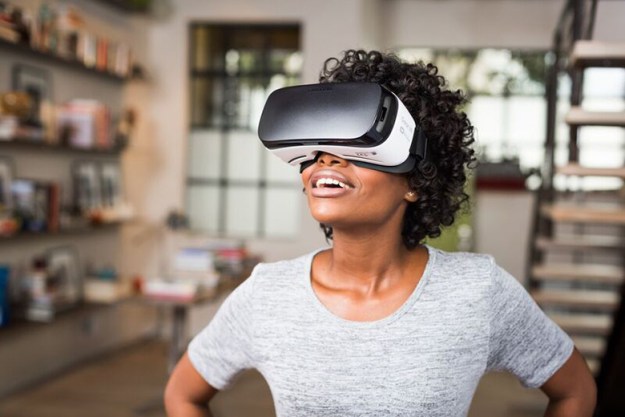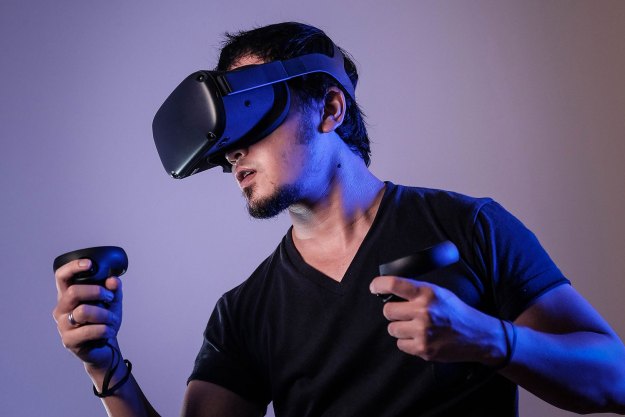It hasn’t happened quite yet, but we may soon find ourselves in a world where virtual reality and everyday reality are all but indistinguishable, and equally ubiquitous. And to prepare ourselves for that, we’re obviously in dire need of a VR headset that isn’t bulky, absurd looking, expensive, or all the above. So here to fill the void in our lives is Figment VR, the world’s first VR and AR phone case, which today launched on Kickstarter.
Promising to democratize the way in which people interact with and access virtual reality, the slim and sleek design of Figment VR is the ultimate in accessibility — and because it’s a phone case, it goes anywhere your smartphone goes (which, let’s face it, is everywhere). Triggers located on the sides of the case open the VR viewer, and users can then select a VR app to view an experience. The phone case itself then “serves as a lens to explore VR content through apps like Google Cardboard, Jaunt VR, Vrse and more,” notes the device’s press release.
Designed like an origami, Figment VR is as high-quality as it is compact. Constructed with polycarbonate plastic coated in silicone rubber, the VR viewer’s bridge is made of a high grade anodized aluminum, and features scratch-resistant lenses. When you need to view something in VR, the bridge extends to maintain the proper distance between your eyes and the screen, and when you’re done, you can simply fold the viewer back into the case.
“Until now, the VR and AR markets have been unattainable for most people,” said Zi Wang, Founder of Figment VR, “We’re thrilled to offer an easy-to-use product that completely changes the way we access virtual reality and share the experience with others. People can now take VR with them everywhere they go.”
“Virtual reality is pretty amazing,” Wang further told Digital Trends. “We think that coming soon, augmented reality — virtual things integrated into your real surroundings — will be even cooler. Imagine looking around through your viewer, spotting your vintage record of Paul McCartney’s “Live and Let Die” on your desk, and having your phone immerse you in the concert experience. Or looking at your Starbucks Pumpkin Spice Latte and being transported to a tropical coffee plantation or a rustic pumpkin farm. The future’s looking pretty bright, and Figment is ready for it!”
As more and more industries find new and innovative ways to integrate virtual reality into their products, from VR art galleries to VR journalism, Figment VR asserts that it is meeting a demand for a more accessible method to participate in this highly interactive content. By introducing “an on-the-go VR viewing platform with exceptional quality” to its users, Figment VR hopes to capitalize on the growing popularity of the new technology. In the near future, the team also plans to launch an app that is integrated with augmented reality software, which will “be able to detect physical objects in real time, get more info about them and control them with digital representations.”
From now until January 12, 2016, you can help turn Figment VR into a reality by supporting their Kickstarter campaign. Early bird pricing begins at $49, and the case, available in white and black, is compatible with the iPhone 6, iPhone 6 Plus, iPhone 6s, and iPhone 6s Plus. When Figment hits retail stores, it will go for $79, so get yours first and get a good deal.
Figment VR has additional plans as well. The app has a wide array of functionality that allows users to play games, listen to music and much more. Further details about the app will be released when Figment VR is shipped to backers.
The Kickstarter campaign runs from November 17 until January 12, 2015.
Editors' Recommendations
- The best Meta Quest 2 games
- I don’t want Apple to announce its VR headset
- We finally might know what Apple will call its AR/VR headset
- Apple VR rumored to run on Mac chipset
- Apple is not ready to launch its AR/VR headset yet
